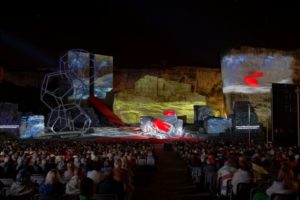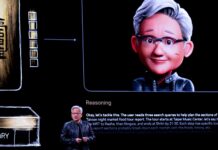
Will 2018 be a tipping point for immersive audio?
From an initial base in cinema, object-based audio and other Next Generation Audio technologies are increasingly crossing over into broadcast, post-production and other fixed installation applications
The emergence of Dolby Atmos in the cinema environment was the first indication that what we might term ‘more than stereo’ audio was set to experience a resurgence after 5.1 and 9.1 rather failed to lead everyone into a brave new world. In 2018 the concept of immersive audio is both established and respected in the cinema world, but what of its migration into broadcast, post-production and fixed installation applications such as theatre productions and museum exhibits?
The concise answer is that it’s early days, but the signs are certainly promising. In particular, broadcast appears to be particularly enthusiastic to embrace the opportunities heralded by Next Generation Audio (NGA) technologies such as immersive and object-based audio – not least because there is an industry-wide feeling that a more compelling audio experience is required to complement ultra-high-resolution 4K images. There is also interest in exploring the potential of immersive audio experiences to be tied into personal audio, whereby bespoke interfaces could be offered, allowing users to tailor mixes to their personal preferences.
Timeline Television is a leading outside broadcast company that has recently played a pioneering role in bringing UHD-capable trucks to the market. David Harnett, Timeline’s head of sound, outside broadcast, confirms that all of the company’s UHD trucks are now “ready for Dolby Atmos as we expect increasing demand for clients” – particularly those involved in broadcasting high-profile sports such as football and rugby.

Harnett explains that “a very large reason for the use of Dolby Atmos immersive audio in live sports is so that the audio side of the production can catch up with the live video side. There has been a significant amount of progress from HD to 3G and now 4K/UHD content, and realistically very few changes in the audio since 5.1 audio. We currently produce almost every show we do in 5.1 and have done for many years, but now are looking to make that leap forward in the form of Dolby Atmos audio to ensure the audience at home hears the audio with the same experience now offered from such amazing pictures.”
Unsurprisingly, the advent of immersive audio has had an impact on both audio capture and subsequent mixing in the truck. Harnett would like to see more options in terms of surround-capable microphones, noting that “the only microphone I have found that will produce the height elements alongside the normal 5.1 audio is [made by SoundField] and this has a proprietary cable that connects to two rack units of equipment. There is no doubt that this mic is great, but I would also be keen to see some competitors in this field running on different connections like a dedicated fibre”.
Inside the truck, immersive audio production requires the Timeline team to put its Calrec Audio mixing consoles into immersive monitoring mode “which gangs up two 5.1 main output busses to create the height simultaneously as the 5.1 mix, and then we use a Dolby monitoring tool to create a local render to re-insert into the gallery monitors. I am really looking forward to a time when this could be achieved within the desk in the same way and a downmix created to other formats created as we currently do in 5.1”.
The ability to output mixes in multiple formats with a minimum of repurposing and remixing will be a determining factor as to how widely immersive audio crosses over from sports into other areas of broadcast. At the same time, manufacturers appear to be working hard to fill in crucial spaces in the signal chain both for day-to-day TV production, and in post-production too.
Nugen Audio is one such vendor to have registered a significant uptake in interest in immersive audio in some of its primary segments, including post-production and gaming. The last six months have witnessed a number of new launches into this space, including an update for its Loudness Toolkit (version 2.7) and a further update to its Halo Upmix 3D Immersive Extension that enables second and third order Ambisonic output and support for the AmbiX and FuMa formats. The update also includes both 7.1.4 and 5.1.4 channel configurations to facilitate production in Auro-3D, which is a three-dimensional audio standard used across industries including cinema, gaming and automotive applications.
Nugen Audio technical director Paul Tapper confirms that immersive audio is an increasing contributor to its overall business as service providers in different sectors “look to establish further points of differentiation”.
But while broadcast and post appear to be particularly receptive to the potential of immersive audio, the same can be said of certain elements of fixed installation – especially theatres, museums and other large-scale visitor attractions that are seeking to enhance the sensorial impact of their offers. Astro Spatial Audio – which employs an object-based audio technology for the generation of spatial audio experiences – is one beneficiary of this trend, having recently seen its technology deployed at venues including the State Opera in Berlin, the Maly Theatre in Moscow, Ankara’s Presidential Theatre, Germany’s Folkwang University, Cologne’s Hightide mixing and post-production studio, and the hit Broadway musical The Band’s Visit.
“2017 was a great year for bringing immersive audio to a wider audience,” says ASA founder Bjorn van Munster.

The ASA system continues to evolve, which will certainly stand it in good stead as the overall outlook for immersive audio remains somewhat uncertain, but in terms of achieving the broadest possible take-up for these kind of solutions “education is paramount, but so is the reliability of the product and the fact that it truly adds something special to the user’s toolbox. The added value of object-based immersive audio has been proven again and again, but it’s no good to introduce a technology such as this as just another way to sell boxes – it needs to be understood and nurtured in its own right. To that end, we participate in every single Astro Spatial Audio project because we want every customer to feel great about the new, remarkable possibilities at their fingertips.”
Another company that has been instrumental in developing the theatre and live entertainment space is OutBoard, whose flagship solution is the TiMax 3D Spatial Audio system. 2017 was another successful year with numerous Broadway and London theatre productions to the company’s credit. And OutBoard’s Dave Haydon indicates that the increased availability of immersive-capable products hasn’t done any harm in boosting overall market receptiveness.
“The most significant milestones in the technology marketplace has been the emergence of some interesting multi-channel line-array panoramic audio plus surround propositions from a couple of the major speaker manufacturers, which helps to stimulate the immersive audio conversation that we’ve been engaged in and successfully promoted for many years,” he says.
The TiMax system’s capacity to deliver targeted vocal localisation is among its primary selling points. “Our experience with TiMax spatial reinforcement doing vocal localisation is that once producers have heard it they can’t go back to the ‘old’ way,” says Haydon. “And when we add the immersive audio possibilities in terms of fully spatialised and aligned multichannel reverb, plus 3D layered animated immersive soundscape rendering, we usually get asked back. Vocals reinforced without the immersivity of spatial amplification sound flat and lacking realism – we’ve proved this at the flick of a switch to the likes of Disney Theatrical Group management as well as seasoned sound designers. Once they accept amplification is required for voices and acoustic instruments, directors don’t really want to hear the PA – therefore panning across multiple speaker channels is not the answer.”
Although the long-term viability of immersive audio as a technology with mainstream appeal remains unclear, it is evident that ‘more than stereo’ audio is experiencing its most sustained resurgence since the early 2000s.
Leading and specialist vendors are working hard to fill in the remaining elements of production and mixing workflows, so however the market does develop those wishing to embrace immersive audio will have the tools they need at their disposal.
Want more stories like this sent straight to your inbox? Subscribe to our free daily newsletter here.
Source: mi-pro.co.uk













